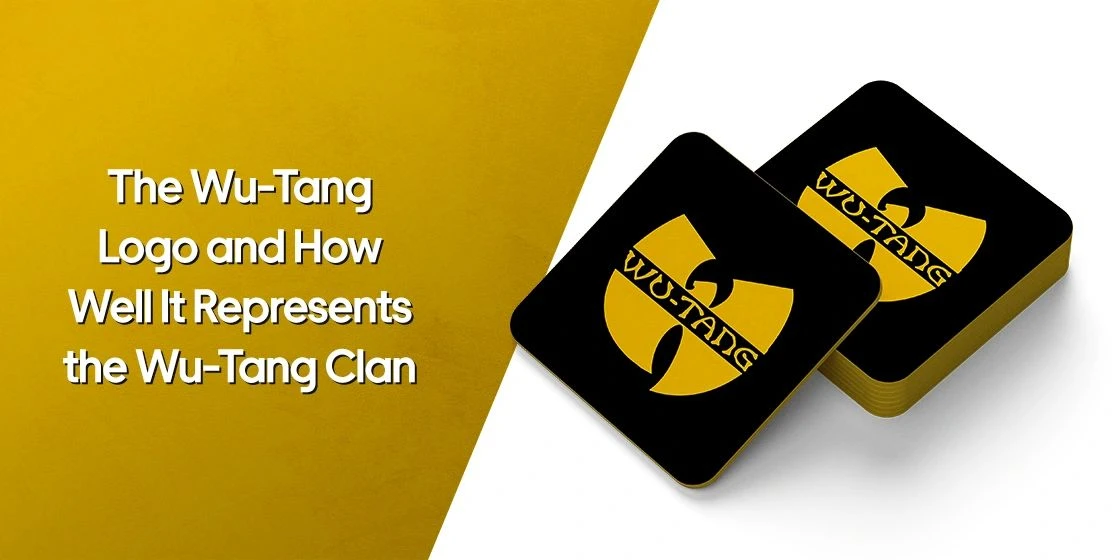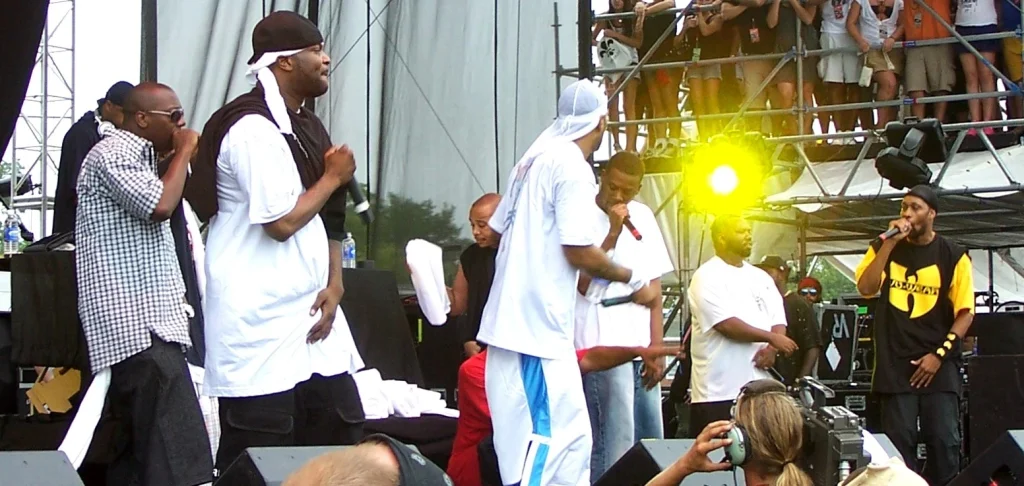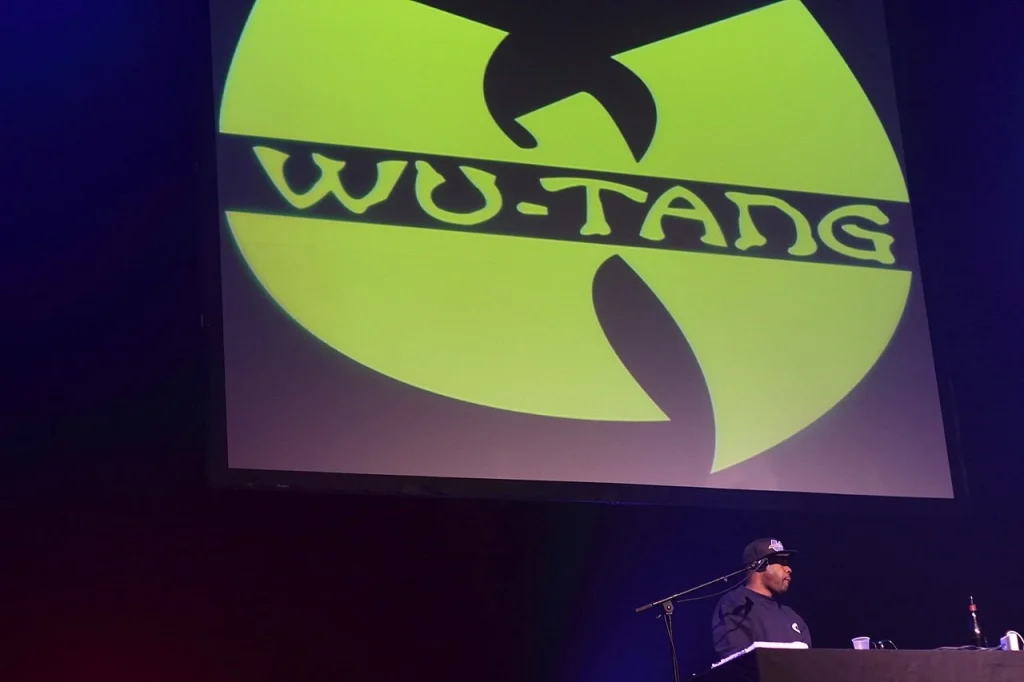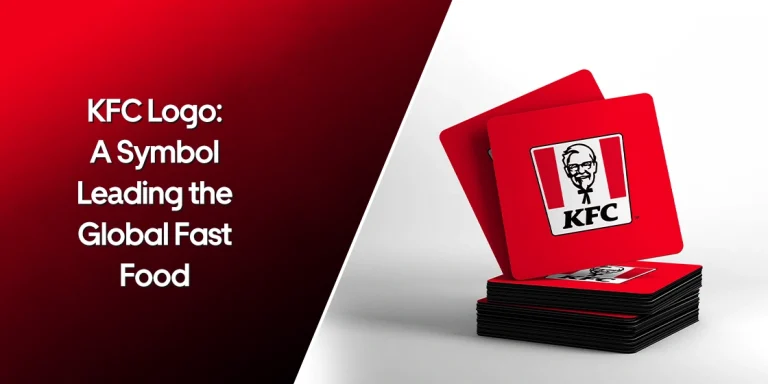
Table of Content
Discover How the Wu-Tang Clan Logo Became a Defining Symbol of East Cost Hip-Hop
The Wu-Tang Clan, a groundbreaking hip-hop group that formed in Staten Island, New York City in the early 1990s, changed the landscape of rap music. With their unique blend of hardcore lyricism and Shaolin kung-fu iconography, the group revolutionized East Coast hip-hop. And the nine core members – RZA, GZA, Ol’ Dirty Bastard, Method Man, Raekwon, Ghostface Killah, Inspectah Deck, U-God, and Masta Killa created a distinct and influential identity, with Cappadonna later becoming the 10th member.
A critical element of this identity is their iconic Wu-Tang logo: a stylized, sharp-edged “W,” often rendered in gold or yellow against a black background. This symbol has become synonymous with the group’s music, their ethos, and their enduring legacy, affecting various aspects of popular culture. The Wu-Tang symbol is more than just a recognizable graphic; it’s a visual representation of the group’s multifaceted identity.
In this article, we will explore the origins and intended meaning behind the Wu-Tang Clan’s logo from the perspective of a professional logo design agency. This will help us understand how to effectively encapsulate the essence and enduring appeal of the brand into its logo, just like the Wu-Tang Clan accomplished.
Let’s begin.
What is the Wu-Tang Clan? A Brief Overview

The Wu-Tang Clan was formed in Staten Island, New York City, in 1992, largely through the vision of Robert Diggs, known as RZA, who served as the group’s de facto leader and primary producer. The initial nine core members included his cousins GZA and Ol’ Dirty Bastard, along with Method Man, Raekwon, Ghostface Killah, Inspectah Deck, U-God, and Masta Killa. And the diverse group brought together a diverse range of lyrical styles and personalities.
Their name was directly inspired by the 1983 martial arts film “Shaolin and Wu Tang,” reflecting their fascination with kung-fu cinema and Eastern philosophy in general. And this fascination heavily influenced their lyrics, imagery, and overall vibe. The term “Wu-Tang” itself became associated with a formidable and disciplined style of belligerence, a metaphor that the group readily embraced, and becoming known for “keepin’ it real.”
The Clan’s breakthrough came with their independently released single “Protect Ya Neck” in 1993, which gained a lot of underground buzz due to the raw talent and unique chemistry of the various members. And despite the challenge of catering to the individual aspirations of nine distinct artists, they secured an unprecedented deal with Loud/RCA Records.
This deal allowed each member to pursue solo careers on different labels, while still remaining unified under the Wu-Tang banner, resulting in some great personal branding examples. This innovative business model proved highly successful, launching the solo careers of several members into the mainstream while strengthening the collective brand.
Their debut album, “Enter the Wu-Tang (36 Chambers),” released in November 1993, is now considered a seminal work in hip-hop history, renowned for its gritty sound, intricate wordplay, and the distinct vocal styles of each member.
The Wu-Tang Clan’s impact extended far beyond their musical contributions. Their slang and terminology became influential, and their Wu-Tang logo quickly became a ubiquitous symbol of hip-hop culture. This cemented their status as one of the most important and influential groups in the history of hip-hop.
The Impact of the Wu-Tang Logo and the Group on East Coast Rap

The emergence of the Wu-Tang Clan in the early 1990s marked a significant turning point for East Coast rap. At a time when West Coast G-funk was dominating, the Wu-Tang Clan brought a raw, hardcore sound and a distinct aesthetic that revitalized the New York hip-hop scene.
Their gritty production, characterized by lo-fi samples and hard-hitting beats, provided a sharp contrast to the smoother sounds of West Coast hip-hop. Lyrically, their complex wordplay, intricate rhyme schemes, and vivid storytelling, established a new standard for East Coast MCs. The Clan’s success resulted in a resurgence of hardcore hip-hop from the East Coast, influencing countless artists who followed them.
The Wu-Tang logo played a crucial role in solidifying the group’s identity and amplifying their impact. The stylized “W” quickly became a recognizable emblem, not just for fans of their music but within the broader hip-hop community and eventually mainstream culture.
Its bold and sharp design with the bird as inspiration resonated with the group’s aggressive style and persona, serving as a great example of how to make an album cover iconic. The logo’s prevalence on merchandise, album art, and graffiti further cemented its status as a powerful symbol of East Coast hip-hop.
How Wu-Tang Clan’s Innovative Record Deal Changed the Industry?
Beyond the musical impact, the Wu-Tang Clan’s innovative business model also had a lasting influence on the music industry. Their record deal allowing members to sign solo contracts while remaining part of the group introduced a new way for large groups to navigate the complexities of the record industry.
This approach laid the groundwork for other hip-hop groups, and showed the artists how to maintain creative control while achieving individual success. The Wu-Tang Clan, both through their groundbreaking music and their iconic Wu-Tang logo, became synonymous with a new era of East Coast rap characterized by lyrical complexity, and raw, independent energy.
Deciphering the Wu-Tang Logo to Understand Its Ideation

The iconic Wu-Tang logo was a symbol that represented a change in the hip-hop industry. It featured a sharp and stylized “W,” created by Ronald “Mathematics” Bean, who served as the group’s DJ and graphic artist.
According to the founder RZA, the initial concept for the logo was far more graphic, intended to visually represent the theme of their debut single “Protect Ya Neck.” This original idea involved a severed head with dreadlocks being held up, dripping blood. However, the group ultimately decided this was too explicit and opted for a simpler, more abstract design focusing on the letter “W.” This evolution highlights the group’s awareness of their image and their desire for a logo that was universal and impactful, yet not overly explicit.
Understanding the Color Theme and Bird Symbology of the Wu-Tang Logo
The final design of the logo, with its sharp, angular lines, and similarities with a rising bird, evokes a sense of power, precision, and a weapon-like quality. This aligns perfectly with the Wu-Tang Clan’s lyrical style, often described as sharp and cutting. The resemblance to a bird in flight, with outstretched wings, has a special meaning as well.
Birds often symbolize freedom, elevation, and a unique perspective, which is interpreted as representing the Wu-Tang Clan’s artistic freedom and their elevated status within the hip-hop world. Moreover, the consistent use of specific colors, particularly gold or yellow against a black backdrop, adds another layer of meaning to the logo.
Shades of gold color often symbolizes power, wealth, and prestige, reflecting the Clan’s ambition and eventual success. Black represents strength and mystery, an allusion to the origins of their music. The stark contrast between these colors makes the logo visually striking and easily recognizable.
In essence, the Wu-Tang logo, despite its simplicity, is a multi-layered symbol that effectively captures key elements of the group’s identity. Its memorability and versatility have made it a lasting symbol of one of the most influential hip-hop groups of all time.
FAQs
| What is the animal in the Wu-Tang logo? While the Wu-Tang logo shows a bird in flight, there is no specific information about what kind of a bird it actually is. |
| What is the Wu-Tang hand symbol? The Wu-Tang hand symbol is derived from the intricate hand movements of Shaolin Kung-fu and the gang culture of the United States, and represents the letter “W” made with the two hands. |
| Is the Wu-Tang logo copyrighted? Yes, copyright, trademarks, and similar laws protect the Wu-Tang Clan logo and its various imagery. |
Conclusion
The iconic Wu-Tang logo stands as a powerful symbol of the group’s lasting impact and everlasting identity. The evolved, stylized “W” effectively encapsulates their sharp skills, and their undeniable presence within the hip-hop landscape.
Moreover, its bold design and consistent color palette have made it instantly recognizable, transcending its function as a simple branding element to become a symbol of a cultural movement. The logo’s enduring memorability shows its effectiveness in representing the unique and influential force of the Wu-Tang Clan, solidifying their place in music history.

Logopoppin
Logopoppin is a graphic design agency that specializes in logo designing, web development, video production and advanced branding services. We love to innovate businesses with new age technologies, allowing them to improve their visual reputation.



